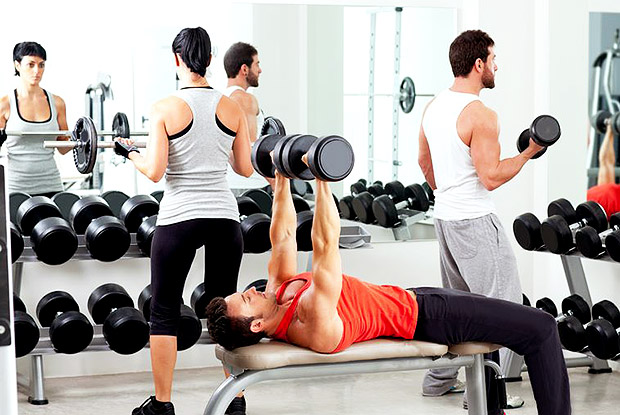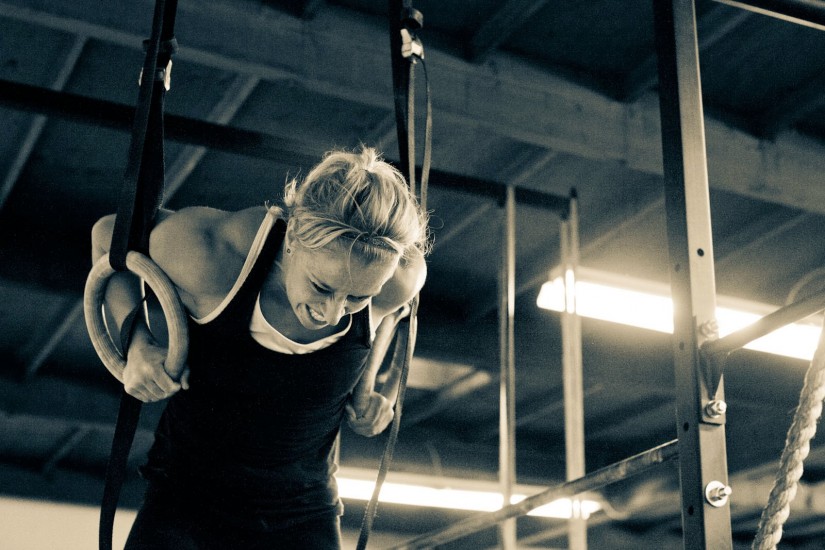The ability to develop large muscles and strength as fast as possible in one movement is very important in many sports in which all movement occurs relatively quickly (strongman, weight lifting, ski jumping rate, turnover rate jump, long jump rate, sprint etc.). Lets look at some different types of training, to target what we really want to achieve.
In some sports it is mostly about developing the greatest power in a single movement, usually only once (Powerlifting and weightlifting). In other sports movement is repeated one hundred and thousands of times (marathon, orienteering, cross country). In some sports is also the requirement for static muscle strength large (wrestling, skating, skiing, sailing). In most sporting situations is not the maximum strength critical for improving performance.
It requires different training to develop muscle strength appropriate and functional in terms of the situations mentioned above. Further, I therefore look at some strength training methods for the development of:
* The maximum muscle strength
* Muscle Volume
* Static muscle strength
* Doggie muscle strength
Training of maximum strength with a large external load.
If you want to do a muscle group so the bar as possible, you need to both develop the cross section of muscle and improve neuromuscular function. Experiments have shown that the best results if you use large loads. This means objects that weigh between 80 and 100% of 1 RM (one repetition maximum). If you are lifting so heavy, it is important to be well trained in advance. You should also master the body use and have good lifting technique. Table 1 shows an actual training method to increase the muscles ability to develop maximum power:
Load 85-100% of maximum strength
Bet the maximum
Motion Tempo as quickly as possible
Repetitions 1-3
Series 3-5
Breaks 3-4 minutes
The number of exercises 4-5
If you can stand more than four to five repetitions per series, this is a good sign that you can increase the load somewhat. Want to get good results, you should exercise at least three times a week, those who place great emphasis on this method of training days are usually between 4 to 6 times a week. Remember however that it is necessary to give the different muscle groups enough rest between workouts. Furthermore you need to find exercises that “hit” the muscles of the various sports demands. There is this thing called specifications or requirements analysis.
Training for maximal strength with medium-sized external load.
From academic quarters Mon advised not to start exercising maximum strength until 16 years of age. A novice should not train with loads going up to the maximum. 50-60% of the maximum is heavy enough to provide a usable training effect in the initial adaptation phase. Table 2 shows an actual training method for this:
Load 50-85% of maximum performance
Bet the maximum
Motion Tempo as quickly as possible
3-10 repetitions
Series 2-3
Breaks 2-3 minutes
The number of exercises 5-6
If you are strong enough and have a good lifting technique, you can vary any of these fitness models in the bench press and squat.
Training of muscle volume – body building.
The goal of a bodybuilder is to be as muscular as possible. In order to get developed a large and pronounced musculature on the body parts that are evaluated in body building / body building, they must get rid of excess fat and build muscle cross-section of intensive strength training with relatively modest external weight loads. This can only be achieved with a strict diet (cutting) and a training program that builds up the muscle proportions.
The main trend is that this training be implemented with many repetitions (reps) / series (set). “Pump Method” is about this strength training form called. Table 3 shows an actual training method for muscle volume increase:
Workload varies from 60 to 80% of 1RM
Buy sustain the intensity of the muscle is suitably tired
5-15 repetitions
Series 5-15
Exercises per muscle groups 3-4
Workout per muscle group per week 2-4
Breaks 1.2 minutes
Experts believe that bodybuilders who train with relatively moderate weight loads, it will survive poorly in weightlifting and powerlifting than athletes who train with external loads up to the maximum. This would then mean that the training methods of a bodybuilder is less likely to develop maximum power.
Body Builders located at a high level of performance, training up to two sessions of the day most of the year. Every muscle group is usually trained two to four times per week. One exception is abdominals(stomach) that they exercise at least four to five times a week.
Training of static (isometric) muscle strength.
Practical experiment:
Lock a boom on the upper side, lie on your back and try squeeze all you can stand with their feet against the pole. You can register quickly that there’s something in the muscles that extend the hip and knee joints. If you press the maximum, you notice that you only manage to hold out for a short time.
Muscles that work in this way, performs a static work. There’s no movement in the joints while you are in, and muscle length does not change. Blood vessels in muscles pressed together, and there is almost a loss of oxygen – energy revenues is largely anaerobic. The muscles become tired, and they will solidify if the static muscle work lasts a while.
Regarding the requirements for stability and to maintain body position, this will vary from sport to sport. In some sports such as shooting with rifle, pistol and bow, we try to find the body positions and the use of muscles that provide the most quiet of body and gear. This is called the static stability. In other sports have muscles sustain a constant static pressure (where the external force variations are quite predictable). Such static stability is required eg. of the forearm muscles / fingers in connection with windsurfing (keep the boom), and the thigh and seat muscles that hold body position stable in speed skating. The stability also means opposition to the rapid and uncontrollable variation in external influence, as in wrestling, judo and skiing there all the time are talking about dynamic changes of body position relative to the surface, lighting conditions, opponents, tactics, etc.
The rapid variations in the external power pattern in these sports require great force to the speed of mobilization and power development with a view to providing a dynamic stability. As with other strength training also apply to static exercise that you can progress as you train on. Training affects the strength of the muscle length you train in. You develop maximum isometric strength by static exercise with maximum effort. And you will be better to hold a long position, you have to train for long sessions.
The training of the maximum static strength, it is easiest to work with an opposition that is so great that you are not able to make some movement. Perform the exercises in different positions in the movement path. Using three different positions in the joint, so that you exercise the muscles in three different initial lengths. Table 4 shows an actual training method for training the maximum static (isometric) muscle strength:
Load maximum muscle tension
Hold 5-6 seconds
Repetition / series 3-5 for each exercise
Breaks 2-3 min between each repetition / series
Number of exercises 3-5
If you train stamina, static muscular strength for a particular sport, the training should be made in relation to the requirements set sport when it comes to stress, duration and body position. In some cases it may be useful to combine such training with the dynamic work. The following methods may be appropriate for the training of endurance static muscle strength:
Model A -> Hold Time: 10-12 seconds (3-5 repetitions) x 5 series – breaks 1-2 minutes.
Model B -> Hold Time: maximum (one repetition) x 3 sets – 3-5 minute breaks.
Model C -> Hold Time: 10-12 seconds (10-15 reps) – 5-15 second pauses.
Training effect of maximal static strength goes out especially to increase muscle cross section. This training method is to some extent used to supplement training in modern weight lifting. Training of persistent static muscle strength is available in the rehabilitation or injury, for people who will train the stabilizing muscles in the abdomen and back, or to prevent muscle wastage.
Training of muscle strength endurance.
With persistent muscle strength believed to have the ability to muscle to economize power consumption.
How much power we can develop over a relatively long time is critical in sports where you have to overcome an external load or resistance many times. Such sports are canoeing, rowing, swimming, cross country skiing, alpine skiing, skating, wrestling, sailing, long distance and most ball games.
In all these sports, it is important that training methods take into account the actual movement pattern that the particular sport requires. When we train with relatively little external weight load, it can often be useful to use the strain that is slightly heavier than the sport requires. Examples of this are running in loose sand or snow, skate imitation with a weight load, ran with the weight vest, paddling with resistance, etc. Cross-country skiers engaged in a lot of bouncing, cross-country long hills with poles to train the special force that is needed to effectively in the hills on skis. Endurance strength training can also be implemented with external loading of partner or elastic rubber bands as resistance. Table 5 shows an actual training method to increase the muscles ability to use greater force in a sport or an exercise over a certain time:
Load small (0-50% of 1RM)
Bet the max – the maximum
Motion Mode slow – moderate
Repetition / duration of fatigue occurs
Number of series per exercise 5-10
The pause between the series
10-15 seconds (short pause)
2-3 minutes (long pause)
Number drills 5-10




